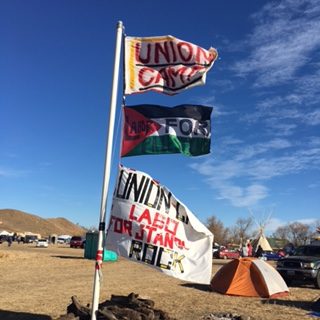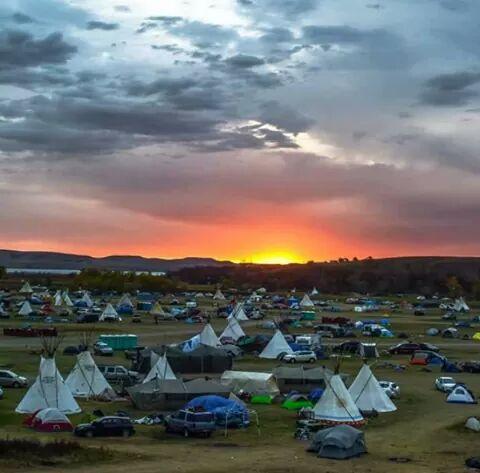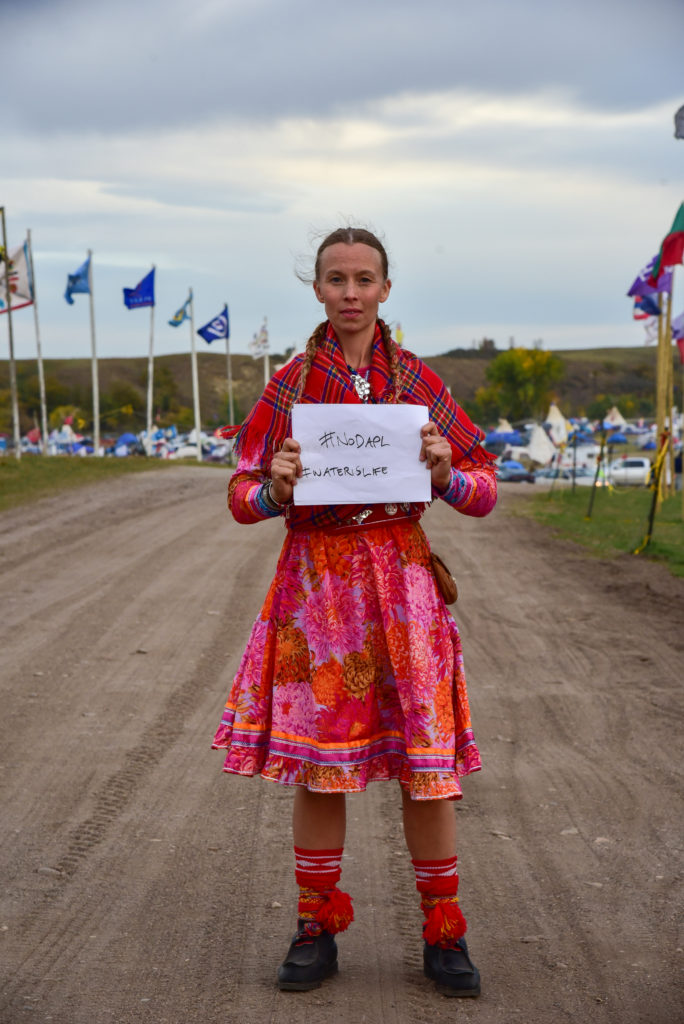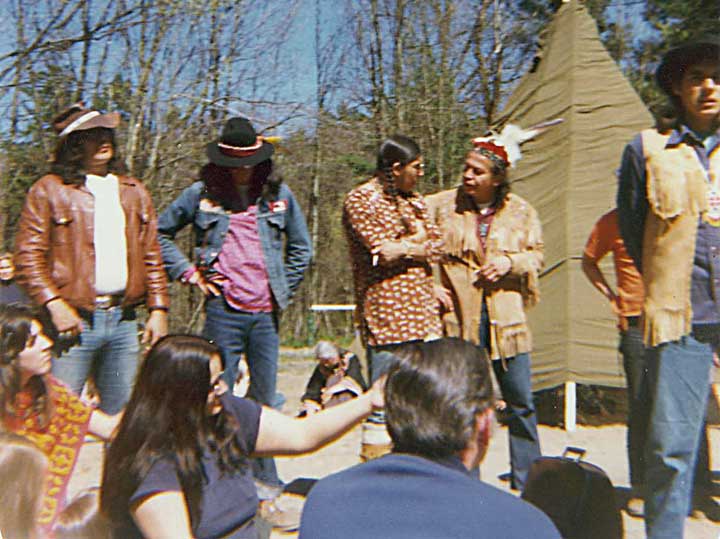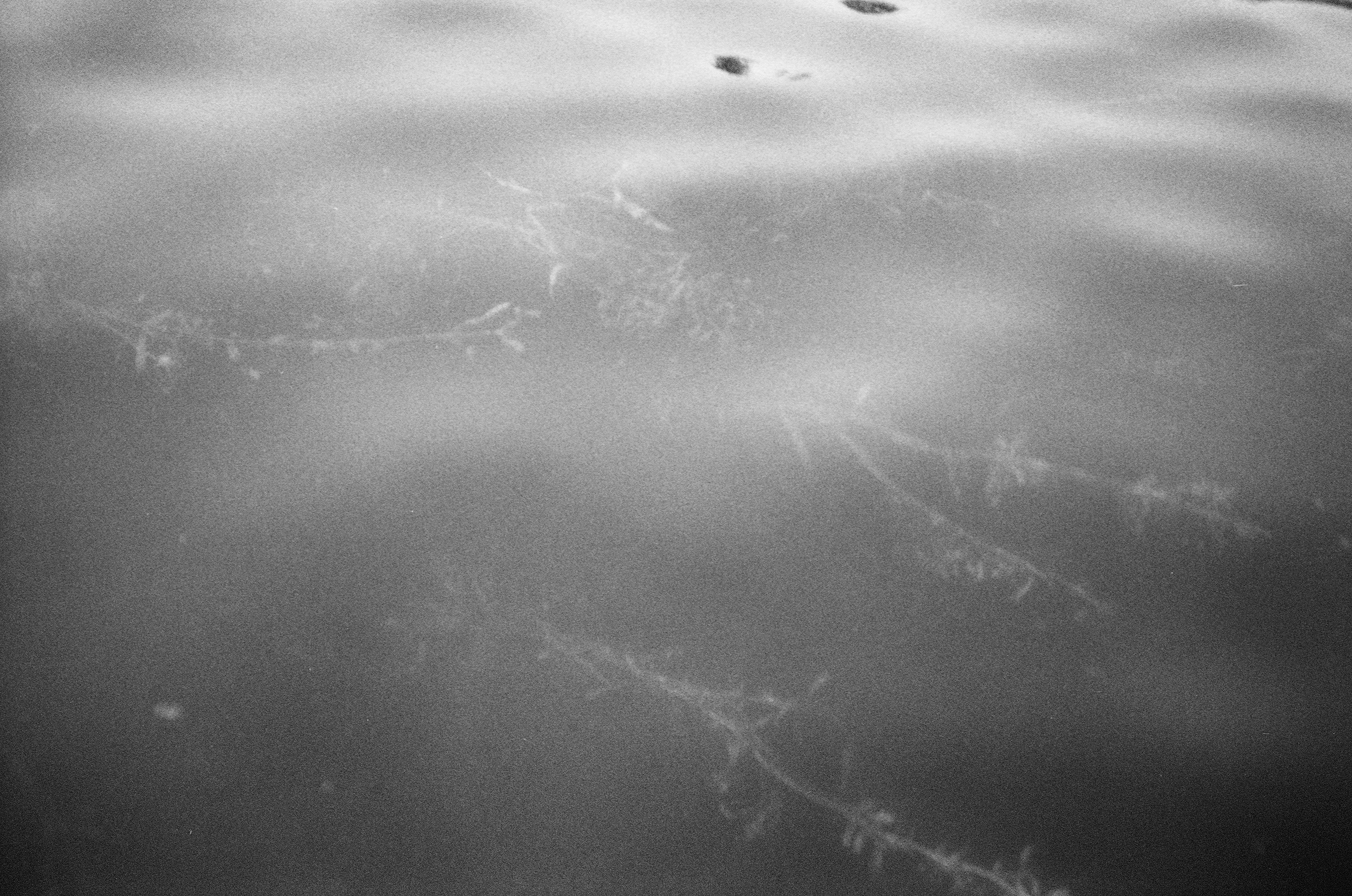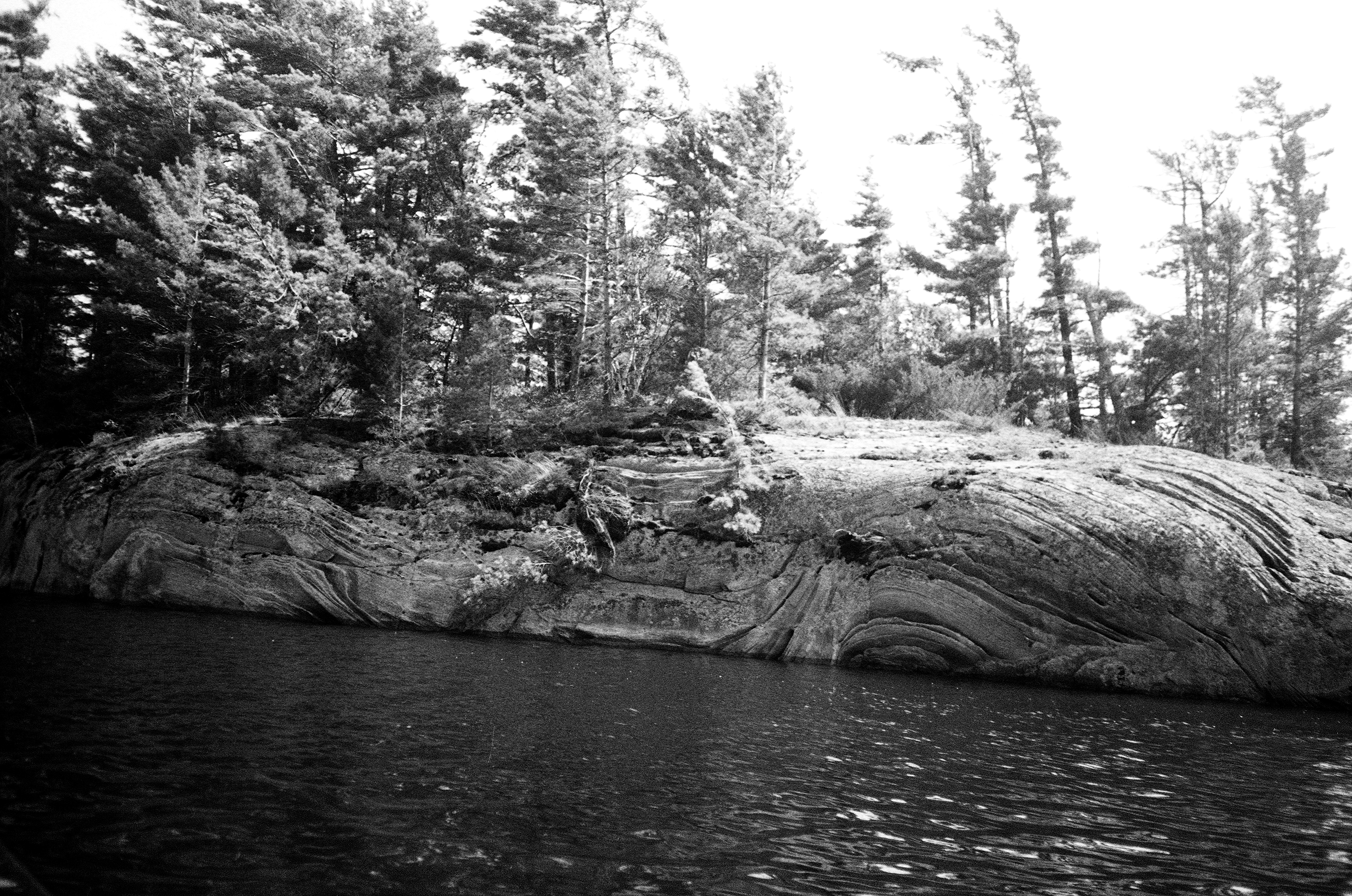
by Paula Monroy
The Uru-Chipaya territory is an autonomous indigenous municipality of the Plurinational Republic of Bolivia. The region stands 3876 m. a.m.s.l., located 194 km southwest of Oruro city, northeast of the Coipasa salt flat—the second most important in South America (2500 km2). Currently, the municipality counts with a permanent population of about 1814 people. The main productive activities are subsistence agriculture (quinoa, potatoes and kañahua) and livestock (sheep breeding—approximately 86%, and camelids—approximately 14%) also intended for self-consumption. In December 2015 Lake Poopo dried up and now the Lauca river is facing a similar fate, forcing Chipaya people to flee their territory due to water scarcity.
However, other factors cumulative to the stress occasioned by drought are as well relevant when inquiring how the continuance of the Chipaya nation is challenged. To explore the issues at hand, a skype interview with Leonel Cerruto, Founder and Director of KAWSAY-Centro de Culturas Originarias, was conducted. As an institution, Kawsay has the main objective of strengthening indigenous originary campesino organizations through projects that include La Escuela de la Madre Tierra (The Mother Earth School). The conversation started with a discussion about tourism.
I wanted to start off by asking you about the tourism initiative in the Chipaya territory. When I was there I remember hearing from our brothers about an Italian man coming in and incentivizing the overture to tourism. Are you aware of how that is going so far?
Leonel Cerruto: A few years ago the community built an albergue in Chipaya, but it is not doing very well. To my understanding, an organization is currently doing some work financed by the European Union, but [Kawsay is] not working with them. [Kawsay’s] strategy is more community oriented. They [the organization] want to promote tourism in general. However, it is up to the autonomous indigenous government to decide in the end. The autonomy was voted ‘yes’ with close to 80% of the votes. We are happy because it was the last step to confirm the indigenous autonomy. We will enter a process of transition to formalize [the Chipaya’s] own government. A bigger challenge will come about, such as where will the community get resources from, because people go to Chile to work and make money so they can sustain themselves. In that sense, tourism is a good choice because it does not require a big investment.
The organization Leonel referred to is GVC Italia—Gruppo di Volontariato Civile (Civil Volunteer Group). As he stated, the European Union is financing the project, which was named “Qnas Soñi (People of the Water): CHIPAYA, between tradition and technology, towards a resilient municipality”. It is an intervention plan that aims to assist the Chipaya people in adopting a strategy that pretends to help them reclaim their cultural identity and ‘treasure’ their ancestral inheritance. It pretends to do so by implementing four processes associated with the construction of a resilient community, one of which is developing services for tourists and promote it as a cultural destination nationally and worldwide.
It appears to be a good idea, but there is something missing. In their website, the organization [GVC] overlooks the importance of conducting an impact assessment. The Chipaya territory is located in a zone with pandemic flora and fauna species. Considering the Poppo Lake dried up not long ago, introducing an initiative like the one [GVC] is promoting would be adding more pressure to the ecosystem. For example, tourism requires sanitary services and food. It could also bring more garbage in the area like plastic water bottles and snack packages. What do you think?
L. C.: We are not too informed about [GVC]’s project. We’ve been more focused on the indigenous autonomy aspect. We are assisting the community in mobilizing to spread their own statuto because there were some people opposing to the indigenous autonomy. [GVC] is separate from us. However, things are about to change. For example, now that the indigenous autonomy has been adopted, the governance structure will change. So, tourism will be discussed in a participatory manner.
The state is interested, yes, but the problem I see is that they are not looking at it from the Chipaya perspective. They label it as ‘community tourism’, but they are misunderstanding it for rural tourism, which is not community tourism at all.
To my understanding the state is supporting [GVC]’s project.
L. C.: The state is interested, yes, but the problem I see is that they are not looking at it from the Chipaya perspective. They label it as ‘community tourism’, but they are misunderstanding it for rural tourism, which is not community tourism at all.

What comes to mind is the experience of my hometown Tepoztlan in regards of tourism in general. Back in the early 1900s Robert Redfield, American anthropologist and ethno-linguist, published a study about the campesino community in the village, which attracted sociologist Oscar Lewis whose research in the village revolved around poverty. Since then, the village underwent a process of urbanization as it became a hotspot for academic tourism. Then rich people were drawn to live there seasonally because intellectuals and artists were also living there. The pyramid and customs made Tepoztlan a mystical village that to this day receives thousands of visitors every year without any sort of control or regulation.
L. C.: What you are saying is true. We have to be careful when integrating tourism. What worries me, which I imagine is similar to what you just mentioned, is that the Chipaya is an ancient culture not only in Bolivia but in the continent. So tourism is a threat. It is valid what you were saying. This reminds me of the Taquile island found in the Peruvian side of the Titicaca Lake. It is a community that self-started tourism and yet did not change their everyday activities, which are all tourist attractions. Each family gets a tourist, and the community has a common fund they collectively administer and also redistribute between the families. This is a good reference of how community tourism is organized and administrated. I know many instances in Ecuador that are more diverse in this branch. In other words, there are many forms of community tourism that are more controlled and the flow of tourists is regulated. The problem is when money dominates the situation.
Yes, I agree. In Tepoztlan, for instance, people are turning their backs on agriculture and prefer to sell their land, land they inherited in most cases, as it is a faster source of income. This is problematic because the territory is fragmented and has become vulnerable to privatization.
L. C.: Right. This is also observed in Cusco. It is a very important point, indeed. Once a territory is fragmented, cultural identity is also fragmented. Indigenous autonomy is important because it integrates the political and especially the spiritual aspect. The latter should be reincorporated.
Putting this in the Chipaya context, what would you suggest as a strategy? Considering that globalization is already changing the lifestyles of teenagers.
L. C.: One way is by recuperating the ancestral view to regain spirituality. This is key. For example, last month I was at a meeting with a group of elders who were saying the importance of seeing the earth as a living being. Once nature is seen as someone who is alive, it is treated as if it were alive. This vision needs to be retaught to young people. We are working with youth to help them integrate in the community life.
In other words, there are many forms of community tourism that are more controlled and the flow of tourists is regulated. The problem is when money dominates the situation.
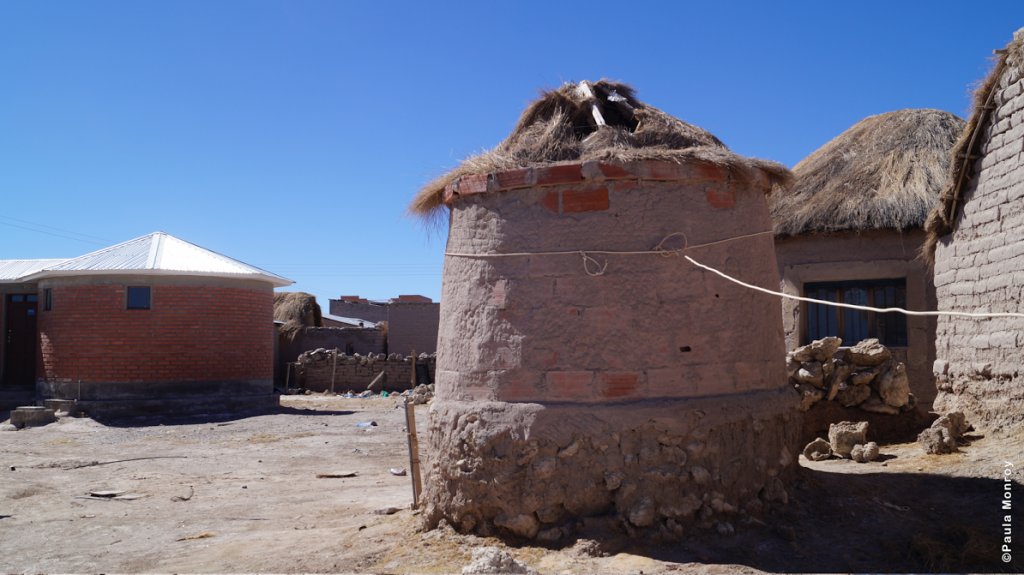
Once nature is seen as someone who is alive, it is treated as if it were alive.
Don’t you think it’s a bit complicated with the internet and mobile phones?
L. C.: That is a reality and we need to embrace it. The internet cannot be eliminated. Most young people have cellphones and they spend most of their time chatting on it. The goal is to help them give the internet a different use. It is not a matter of prohibition, it is rather a matter of switching the use they make of this technology. We are producing videos with them, they are coming up with their own presentations with their own communities. It has been working positively so far, as participants are getting more engaged with their culture and identity. They are integrating in the communal activities more and more.
Are ancient rituals such as capturing the wind and harvesting dunes still practised?
L. C.: Yes, although I am not specifically sure about those two. But, we are working on reincorporating traditional practices into the spiritual and ritual activities. It is a slow process because not all participants accept it right away. It also depends on their families and community. In Charagua, a community where we are undergoing a similar project, we are doing pretty well. Participants are very active and actively integrate in the community.
In regards of food sovereignty and drought…
L. C.: That is serious. Especially in the Andean part, which includes the Chipaya territory, and the Chaco region. It is a desperate situation because, for example, the potato seeds that were cultivated could not germinate as it has not rained.
There is a study online stating that the drought of the Poppo lake is due to water mismanagement.
L. C.: On the one hand, as you say, it is due to water mismanagement. There seems to be a lack of communal management of the resources and a lack of prevention measures. On the other hand, one cannot ignore that drought and el Nino are effects of climate change. The absence of rain is not necessarily because the little water available is mismanaged. Climate change plays a big role in all of this. Both things are cumulative. Another thing I am realizing is that some news are manipulated with political intent. What is true for Bolivia is that, according to official reports, 40% of our glaciers have been lost in the past years. This means that our mountains have less snow, resulting in less water supplying to the rivers and springs. It is undeniable. We have many snowcaps that have lost snow, thus there is no water running from those places. Consequently, there are less volumes of water feeding the rivers. So this is what has been going on. There is no prevention, the proper measurements have not been taken to come up with a contingency plan, for instance. Our water resources continue being used as if nothing was happening. It is a complex matter, and climate change is a key cause.

The absence of rain is not necessarily because the little water available is mismanaged. Climate change plays a big role in all of this. Both things are cumulative.
The following is something that I have been noticing (since my childhood) in communities deemed ‘poor’ in the capitalist sense. It is a dependency on the government for help, or an expectation to be helped from above. While conducting an interview in the Chipaya nation, the interviewee asked for financial aid to the government for the construction of a diversion canal, as if a bureaucrat would watch the video. His colleague told me that the money had already been approved and they were just waiting for the government to hand it out.
L. C.: Absolutely. More than the government it would be the state, though. This government has been giving out more resources, and it is up to the municipality to manage those resources according to the needs of the population. If the municipal agents do not allocate the resources properly, neither will the communities. In the last couple of years this has become a generation of dependency. For this reason, local authorities need to be strengthened, especially in the area of communal organization. This is something we are working on permanently. With the indigenous autonomy they should as well strengthen their organization so it is less dependant on the central state.
Car traffickers don’t respect the borders and the municipality was not capable of keeping them away either. The indigenous autonomy now allows the local authorities to fairly manage their territory.
I noticed that car trafficking is another threat to the territory. What is your opinion on this matter?
Indeed, trafficked cars are driven into their territory, but the Chipaya people are not involved in it. It is up to them to build barriers that will keep [car traffickers] from crossing. Territorial control has been a struggle that the Chipaya people have not been able to do to these days. Car traffickers don’t respect the borders and the municipality was not capable of keeping them away either. The indigenous autonomy now allows the local authorities to fairly manage their territory.
Let me pause to briefly explain what the indigenous autonomy is about. Back in 2007, with 4 states against (Canada, the United States, New Zealand and Australia)—and the abstention of 11 states (which included Colombia and the Russian Federation)—the United Nations’ General Assembly passed the United Nations Declaration on the Rights of Indigenous Peoples (UNDRIP) by a majority of 143 votes in favour. Two years later, President Evo Morales made the official launch of the indigenous autonomy process with the Decree Law 231. As it is recognized in Article 2 and Article 290 of the constitution, indigenous peoples have the right to self-govern their ancestral territory in harmony with law and constitution as long as it is done within the structure of the unitary state.

I read a UN report that says that the health issues [Chipaya] children and women are more prone to get are anemia and malnutrition. What I found concerning is that during my visit I did not see any health centres.
L. C.: Presently, there have been some incentives from the state in this regard. However, as we were saying before [about depending on the state], as indigenous nations we had always had our own systems, not just in regards of health. We have ancestral wisdom. School teaches other ideas about culture.
Is the content taught at public school designed by the state?
L. C.: It is one thing that it is provided by the state, which should be the case anyway, and yet it should be the community who creates its own education system. Resources should be provided by the state because it’s part of a country; but, in this case, communities should have more capabilities to maintain their own education system.
Do you think this could be done in the indigenous autonomy?
L. C.: Yes, relatively because the educative system is centralized by the state. It will be more attainable as [the Chipaya people] get their own system, which needs further strengthening. In the instance of Bolivia, there are three curriculum levels: one is central, another is regional, and the third, which has not been effectively developed, is local. Therefore, it is possible to continue working on regular education. On the other hand, there is the need to continue working on our own community education, which is what indigenous nations have always had for thousands of years. Yet, since these themes are no longer researched in depth, it is as if they did not exist. All cultures have had their own education or formation systems that are actually meant to attain wisdom, including health and any other system. It is important to clarify which are our own systems.
All indigenous cultures have their own ecological principles, or cosmovision. When these principles are forgotten the ecosystem is destroyed.
To conclude, would you say the Chipaya nation is under threat of disappearing?
L. C.: Yes. However, the indigenous autonomy can facilitate the Chipaya people the possibility of recuperating their culture. The Urus are in the process of going extinct, though. A segment of the Uru population lived near the Poppo Lake. Since the lake dried up, they lost their livelihood because they are essentially fishermen. They were forced to migrate. For this reason, their territorial structure is scattering. They are moving to urbanized regions because they no longer have a means to survive. This is happening in a different region of Oruro. It is happening to other cultures, too, and the process is similar: it disjuncts, scatters, and then disappears. There has been progress in the case of the Chipaya nation because the indigenous autonomy will allow them to develop their own life model by strengthening their ancestral culture. At least that is what is hoped. All indigenous cultures have their own ecological principles, or cosmovision. When these principles are forgotten the ecosystem is destroyed.
Paula Monroy is an undergraduate student at Concordia University majoring in Urban Studies.


